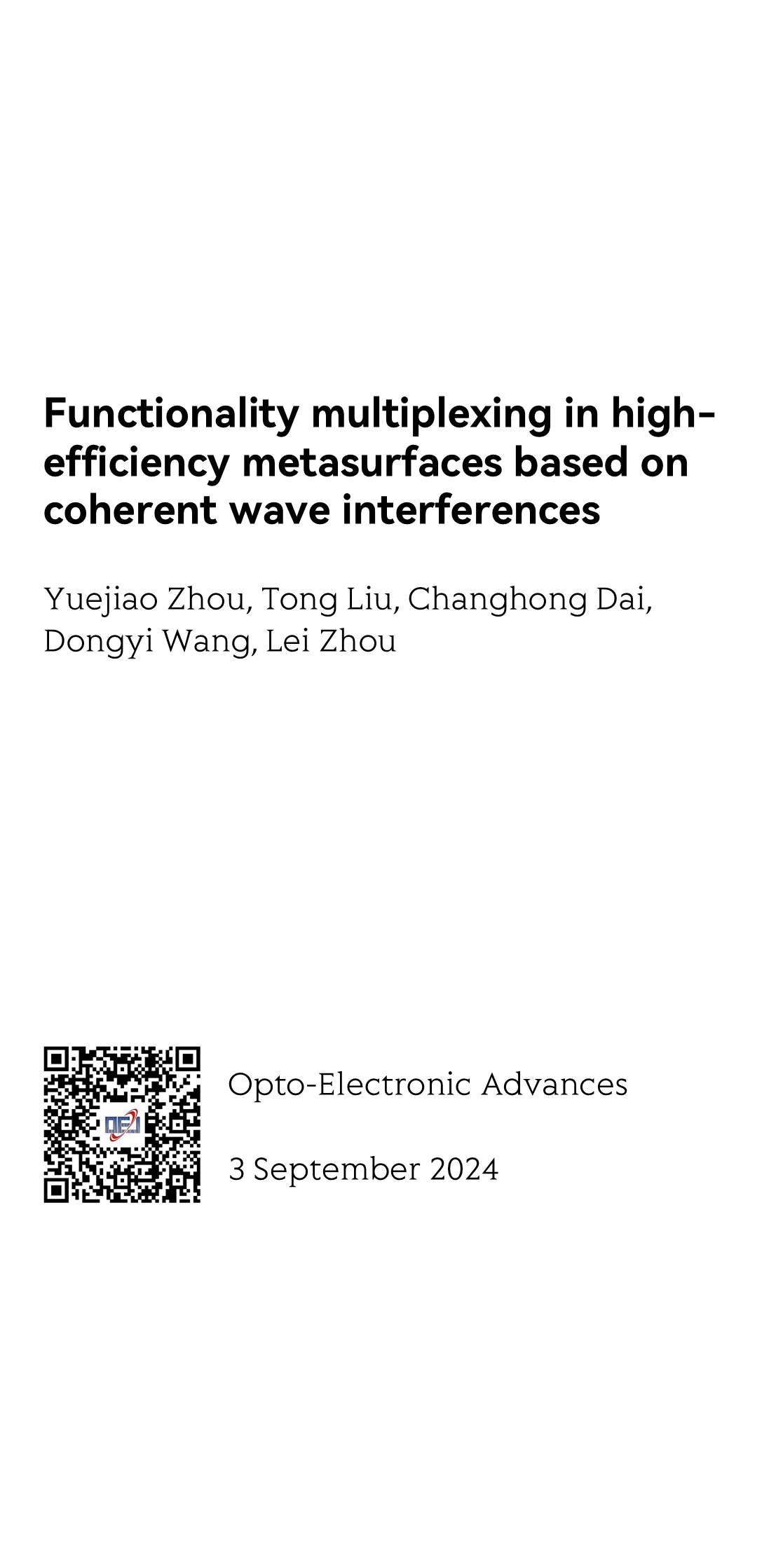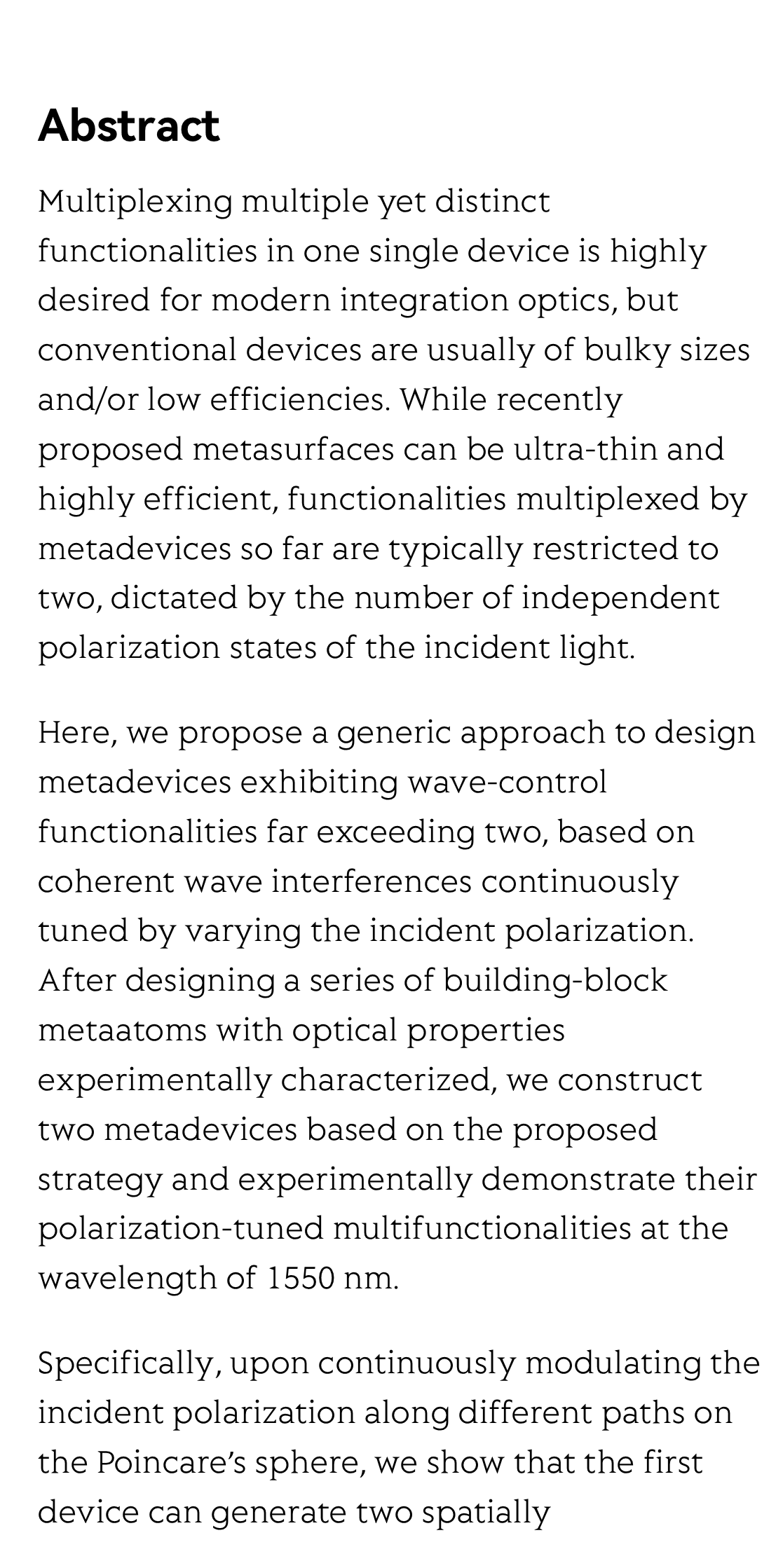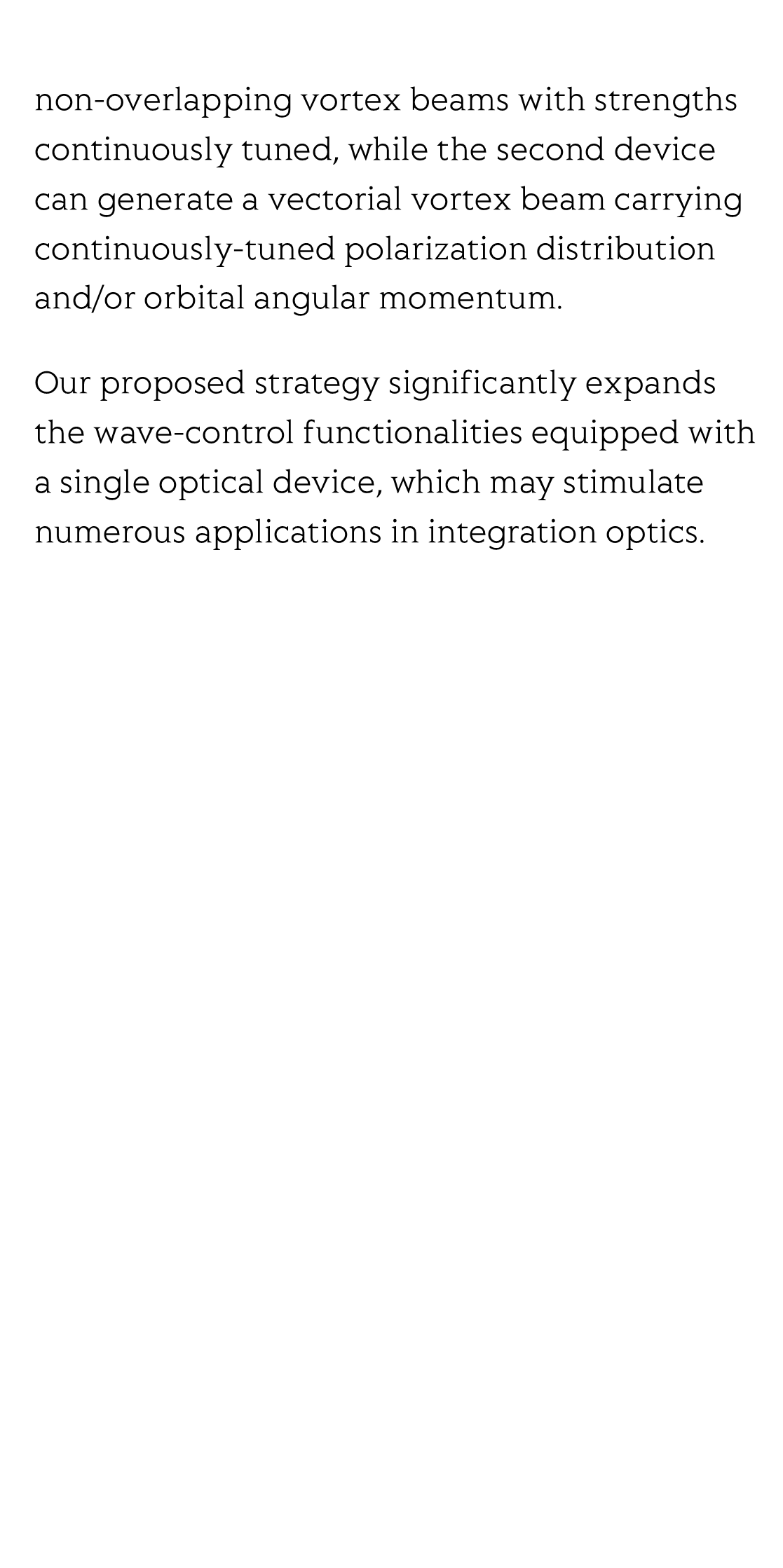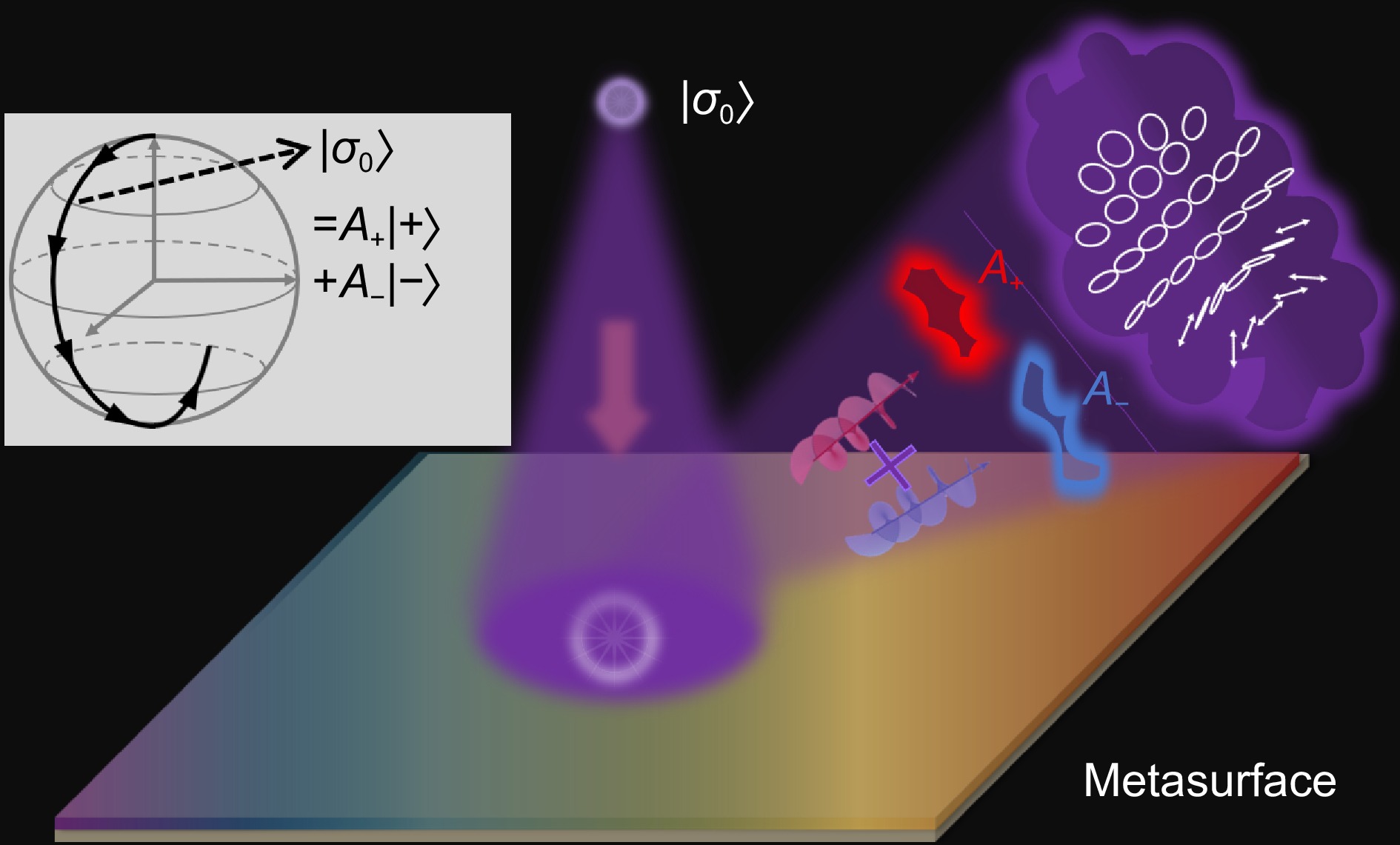(Peer-Reviewed) Functionality multiplexing in high-efficiency metasurfaces based on coherent wave interferences
Yuejiao Zhou 周月娇 ¹, Tong Liu 刘通 ², Changhong Dai 戴昌红 ¹, Dongyi Wang 王冬逸 ³, Lei Zhou 周磊 ¹ ⁴
¹ State Key Laboratory of Surface Physics, Key Laboratory of Micro and Nano Photonic Structures (Ministry of Education), Shanghai Key Laboratory of Metasurfaces for Light Manipulation and Department of Physics, Fudan University, Shanghai 200438, China
中国 上海 复旦大学物理系 上海市超构表面光场调控重点实验室 微纳光子结构教育部重点实验室 表面物理国家重点实验室
² Department of Physics, The Hong Kong University of Science and Technology, Clear Water Bay, Kowloon, Hong Kong 999077, China
中国 香港 香港科技大学 物理系
³ Department of Physics, Hong Kong Baptist University, Kowloon Tong, Hong Kong 999077, China
中国 香港 香港浸会大学 物理系
⁴ Collaborative Innovation Centre of Advanced Microstructures, Nanjing 210093, China
中国 南京 人工微结构科学与技术协同创新中心
Opto-Electronic Advances
, 2024-09-03
Abstract
Multiplexing multiple yet distinct functionalities in one single device is highly desired for modern integration optics, but conventional devices are usually of bulky sizes and/or low efficiencies. While recently proposed metasurfaces can be ultra-thin and highly efficient, functionalities multiplexed by metadevices so far are typically restricted to two, dictated by the number of independent polarization states of the incident light.
Here, we propose a generic approach to design metadevices exhibiting wave-control functionalities far exceeding two, based on coherent wave interferences continuously tuned by varying the incident polarization. After designing a series of building-block metaatoms with optical properties experimentally characterized, we construct two metadevices based on the proposed strategy and experimentally demonstrate their polarization-tuned multifunctionalities at the wavelength of 1550 nm.
Specifically, upon continuously modulating the incident polarization along different paths on the Poincare’s sphere, we show that the first device can generate two spatially non-overlapping vortex beams with strengths continuously tuned, while the second device can generate a vectorial vortex beam carrying continuously-tuned polarization distribution and/or orbital angular momentum.
Our proposed strategy significantly expands the wave-control functionalities equipped with a single optical device, which may stimulate numerous applications in integration optics.
Flicker minimization in power-saving displays enabled by measurement of difference in flexoelectric coefficients and displacement-current in positive dielectric anisotropy liquid crystals
Junho Jung, HaYoung Jung, GyuRi Choi, HanByeol Park, Sun-Mi Park, Ki-Sun Kwon, Heui-Seok Jin, Dong-Jin Lee, Hoon Jeong, JeongKi Park, Byeong Koo Kim, Seung Hee Lee, MinSu Kim
Opto-Electronic Advances
2025-09-25
Dual-frequency angular-multiplexed fringe projection profilometry with deep learning: breaking hardware limits for ultra-high-speed 3D imaging
Wenwu Chen, Yifan Liu, Shijie Feng, Wei Yin, Jiaming Qian, Yixuan Li, Hang Zhang, Maciej Trusiak, Malgorzata Kujawinska, Qian Chen, Chao Zuo
Opto-Electronic Advances
2025-09-25







